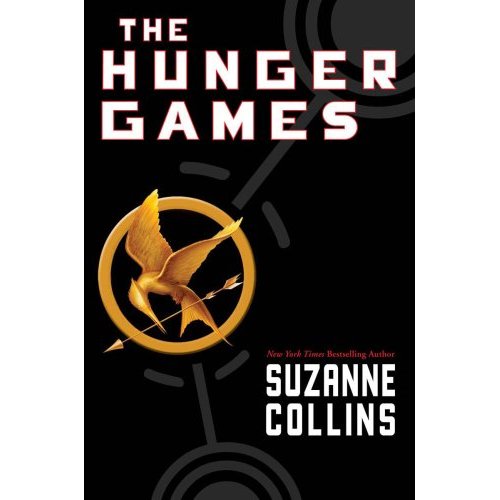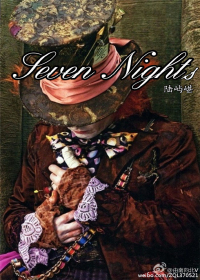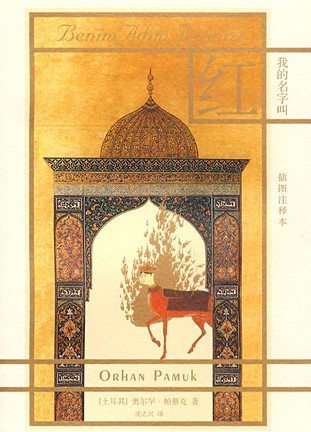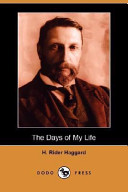my name is red-我的名字叫红-第20章
按键盘上方向键 ← 或 → 可快速上下翻页,按键盘上的 Enter 键可回到本书目录页,按键盘上方向键 ↑ 可回到本页顶部!
————未阅读完?加入书签已便下次继续阅读!
doing the gilding now; in his stead?”
The shouts and screams of children could now be heard through the open
door that faced the inner courtyard。 Below; one of the division heads had
started administering the bastinado to apprentices who’d most likely been
caught with red ink powder in their pockets or gold leaf hidden away in a fold
of paper; probably the two whom I’d seen trembling as they waited in the
cold。 Young painters; seizing an opportunity to mock them; ran to the door to
watch。
“By the time the apprentices paint the ground of the Hippodrome here a
rose color; finishing it off as our Master Osman has dictated;” said Nuri
Effendi cautiously; “our brother Elegant Effendi; God willing; will have
returned from wherever he’s gone and will plete the gilding on these two
pages。 Our master; Osman the Miniaturist; wanted Elegant Effendi to color
the dirt floor of the Hippodrome differently in each scene。 Rose pink; Indian
green; saffron yellow or the color of goose shit。 Whosoever beholds the picture
will realize in the first rendering this is a dirt square and should be earth…
colored; but in the second and third pictures; he’ll want other colors to keep
himself amused。 Embellishing ought to bring merriment to the page。”
I noticed some pictures on a sheet of paper that an assistant left in a corner。
He was working on a single…leaf picture for a Book of Victories; the depiction of
a naval fleet heading off to battle; but it was obvious that the screams of his
friends whose soles were being severely beaten; provoked the illustrator to run
off and watch。 The fleet he made by repeatedly tracing identical ships with a
block pattern didn’t even seem to float in the sea; yet; this artificiality; the lack
of wind in the sails; had less to do with the block pattern than the young
painter’s lack of skill。 I saw with sorrow that the pattern had been cut
violently out of an old book which I couldn’t identify; perhaps a collage album。
Obviously; Master Osman was overlooking quite a lot。
When we came to his own worktable; Nuri Effendi proudly stated that he
finished a gilded royal insignia for Our Sultan; which he’d been working on for
three weeks。 I respectfully admired Nuri Effendi’s gold inlay and the insignia;
which had been made on an empty sheet to ensure that its recipient and the
reason for its being sent would remain secret。 I knew well enough that many
66
impetuous pashas in the East had refrained from rebellion upon seeing the
noble and potent splendor of the Sultan’s royal insignia。
Next; we saw the last masterpieces that Jemal the Calligrapher had
transcribed; pleted and left behind; but we passed over them hastily to
avoid giving credence to opponents of color and decoration who maintained
that true art consisted of calligraphy alone and that decorative illumination
was simply a secondary means of adding emphasis。
Nas?r the Limner was making a mess of a plate he intended to repair from a
version of the Quintet of Nizami dating back to the era of Tamerlane’s sons;
the picture depicted Hüsrev looking at a naked Shirin as she bathed。
A niy…two…year…old former master who was half blind and had nothing
to say besides claiming that sixty years ago he kissed Master Bizhad’s hand in
Tabriz and that the great master of legend was blind and drunk at the time;
showed us with trembling hands the ornamentation on the pen box he would
present as a holiday gift to Our Sultan when it was pleted three months
hence。
Shortly a silence enveloped the whole workshop where close to eighty
painters; students and apprentices worked in the small cells which constituted
the lower floor。 This was a postbeating silence; the likes of which I’d
experienced many times; a silence which would be broken at times by a nerve…
wracking chuckle or a witticism; at times by a few sobs or the suppressed
moan of the beaten boy before his crying fit would remind the master
miniaturists of the beatings they themselves received as apprentices。 But the
half…blind niy…two…year…old master caused me to sense something deeper
for a moment; here; far from all the battles and turmoil: the feeling that
everything was ing to an end。 Immediately before the end of the world;
there would also be such silence。
Painting is the silence of thought and the music of sight。
As I kissed Master Osman’s hand to bid him farewell; I felt not only great
respect toward him; but a sentiment that plunged my soul into turmoil: pity
mixed with the adoration befitting a saint; a peculiar feeling of guilt。 This;
perhaps; because my Enishte—who wanted painters; openly or secretly; to
imitate the methods of the Frankish masters—was his rival。
I suddenly sensed; as well; that I was perhaps seeing the great master alive
for the last time; and in the fluster of wanting to please and hearten him; I
asked a question:
67
“My great master; my dear sir; what separates the genuine miniaturist from
the ordinary?” I assumed the Head Illuminator; who was accustomed to such
fawning questions; would give me a dismissive response; and that he was
presently in the midst of forgetting who I was altogether。
“There is no single measure that can distinguish the great miniaturist from
the unskilled and faithless one;” he said in all seriousness。 “This changes with
time。 Yet the skills and morality with which he would face the evils that
threaten our art are of significance。 Today; in order to determine just how
genuine a young painter is; I’d ask him three questions。”
“And what would they be?”
“Has he e to believe; under the sway of recent custom as well as the
influence of the Chinese and the European Franks; that he ought to have an
individual painting technique; his own style? As an illustrator; does he want to
have a manner; an aspect distinct from others; and does he attempt to prove
this by signing his name somewhere in his work like the Frankish masters? To
determine precisely these things; I’d first ask him a question about ”style‘ and
“signature。”“
“And then?” I asked respectfully。
“Then; I’d want to learn how this illustrator felt about volumes changing
hands; being unbound; and our pictures being used in other books and in
other eras after the shahs and sultans who’d missioned them have died。
This is a subtle issue demanding a response beyond one’s being simply upset
or pleased by it。 Thus; I’d ask the illustrator a question about ”time‘—an
illustrator’s time and Allah’s time。 Do you follow me; my child?“
Nay。 But that’s not what I said。 Instead; I asked; “And the third question?”
“The third would be ”blindness‘!“ said the great master Head Illuminator
Osman; who then fell silent as if this required no explication。
“What is it about ”blindness‘?“ I said with embarrassment。
“Blindness is silence。 If you bine what I’ve just now said; the first and
the second questions; ”blindness’ will emerge。 It’s the farthest one can go in
illustrating; it is seeing what appears out of Allah’s own blackness。“
I said no more。 I walked outside。 I descended the icy stairs without
hurrying。 I knew that I would ask the great master’s three great questions of
Butterfly; Olive and Stork; not only for the sake of conversation; but to better
understand these living legends who were contemporaries of mine。
68
I did not; however; go to the master illuminators’ houses immediately。 I
met with Esther near the Jewish quarter at a new bazaar that had an elevated
view of the confluence of the Golden Horn and the Bosphorus。 Esther was all
atwitter in the pink dress she was forced to wear as a Jew; with her large and
lively body; her mouth which never stopped moving; and her
![(伪犯罪心理同人)[伪犯罪心理]gimmick game人封面](http://www.8kbook.com/cover/2/2722.jpg)
![[秘密(世界上最神奇的潜能开发训练)][1].(美)华莱士·d.沃特斯&封面](http://www.8kbook.com/cover/noimg.jpg)



